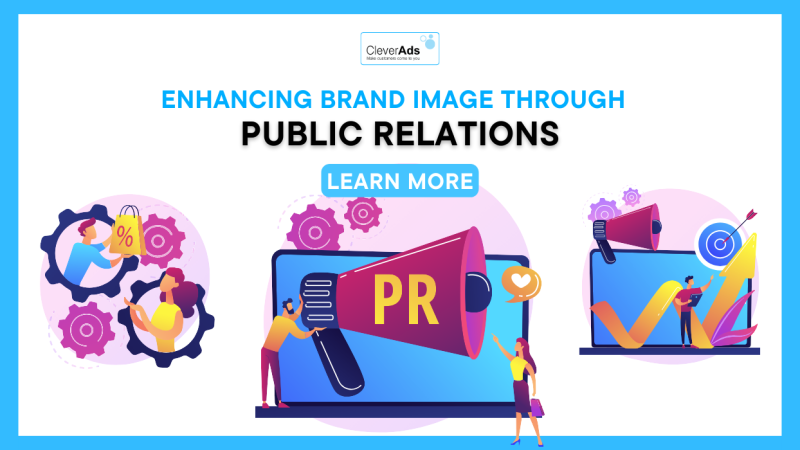All about marketing metrics businesses need to know

What are marketing metrics? What are its roles for businesses? Let’s find out with CleverAds in the article below.
1. What are marketing metrics?
Marketing metrics are what marketers use to track, record, and measure progress over time. These indicators are varied and can vary from platform to platform. Marketers must focus on business goals and choose metrics to measure campaign success or failure. While there are many metrics that marketers can track, we need to focus instead on what matters to each campaign.
Some marketing metrics to measure at different stages of the marketing funnel include:
Marketing metrics: Awareness
- Brand mentions
- Website traffic (Website traffic)
- Bounce rates (Bounce rates)
- Quality of inbound links
- Subscribers (Followers)
Marketing metrics: Consideration/ Decision
- Click-through rates
- Lead conversions
- Lead-to-customer conversions
- Cost per acquisition
- Cost per lead
Marketing metrics: Post-purchase
- Return On Investment
- Customer Lifetime Value (Customer Lifetime Value)
- Customer churn (Rate of customers leaving)
- Revenue growth
- Net promoter score (Customer satisfaction)

2. Why are marketing metrics important?
According to a Google study done with MIT, 89% of marketers use strategic metrics, like total revenue, market share, or customer lifetime value (CLV), to measure the effectiveness of their campaigns. Some of the benefits of using marketing metrics include the following:
- Have data to support sound decision making
- Know which channel offers the highest Return On Investment (ROI)
- Marketing spend report and overall budget allocation
- Increased results across the campaign
- Can focus on critical metrics and know how to maximize lead conversion

3. TOP 5 most important marketing metrics for businesses
3.1. Marketing Qualified Leads
Marketing Qualified Leads (MQL) are often the leading metric in measuring lead activity that your marketing activities directly impact.
Actual MQL figures will vary from business to business as the marketing to sales channels vary between these organizations. It’s important to remember that businesses define their MQL metrics.
3.2. Customer Lifetime Value
Customer Lifetime Value is the value a customer will bring to your business in terms of revenue over their lifetime.
Some customers may make a one-time purchase for 200,000 VND, while others will spend tens of millions of VND over the years if they love what you offer. So by adding up all the revenue you’ve earned and dividing it by the number of customers you’ve had, you’ll get your CLV.
Tips for applying CLV
- Show CLV to Investors: You can divide your CLV by your cost of customer ownership (CAC) to determine precisely how much profit you get from each client you have. This is an excellent metric to share with investors.
- Determining customer loyalty based on CLV: Loyal customers not only bring long-term value to the company but also reduce costs to attract new customers

3.3. Return On Investment
Return on investment (ROI) is one of the most fundamental metrics that all businesses in all industries need to track.
ROI = CLV – Customer Acquisition Cost
The goal of marketing is to influence customers. Therefore, measuring how much you pay versus the value you create is critical to measuring the effectiveness of all marketing activities.
It allows business owners to determine which marketing tactics are most profitable and which need to be made changes. This will enable them to reallocate resources, creating marketing strategies more successful with higher ROI.
Tips for using ROI effectively
Don’t immediately dismiss a marketing strategy: If an ROI assessment shows some of your marketing strategies are underperforming, don’t dismiss them. First, look at your strategy for yourself and see if you can tweak them to make them more successful.
Make sure to do a marketing strategy when it’s successful.
3.4. Impression frequency
Impression in marketing refers to how often a business’s content is displayed.
This metric applies to many strategies, such as:
- Search Engine Optimization (SEO): Impression on SEO when a target audience sees your results on the search engine results page.
- Social media marketing: Impression on social networks is when the target audience sees a paid post or advertisement on these platforms.
- Blogging and content creation: Impression is when a target audience sees your brand’s content.
Impressions are very important. With impressions, engagement and conversions can happen. This is why marketers need to focus from the start on promoting and distributing their content.
3.5. Conversion Rate
Conversion rate measures the percentage of people visiting a landing page who will become customers.
This is closely related to bounce rate: landing pages with high bounce rates often have low conversion rates, although only sometimes.
How to apply the conversion rate
- Landing page tweaks: As with bounce rates, sometimes low conversion rates can be remedied with some tweaks to the landing page. It can be as simple as changing the color of the call to action or adding a featured image or headline.
- Establish a customer relationship: Consider offering freebies to entice visitors to sign up. Of course, they have yet to be ready to decide, but they are interested enough in your product to receive something of the value you offer, thereby building a relationship with your business.
Conclusion on Marketing metrics
Marketing metrics are the basis for marketing strategies and activities. They ensure you are on track with your plan and budget without wasting any effort or budget investment for your business.


